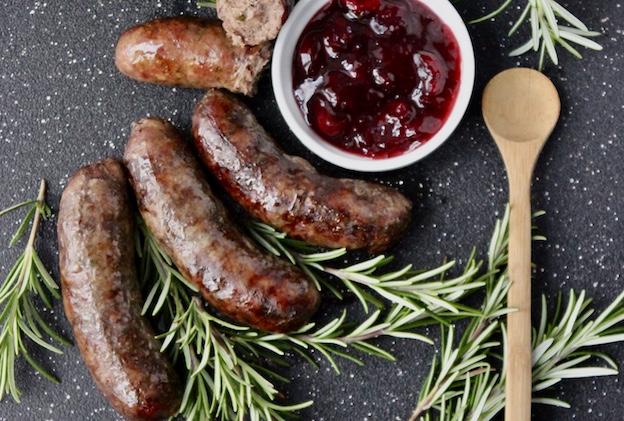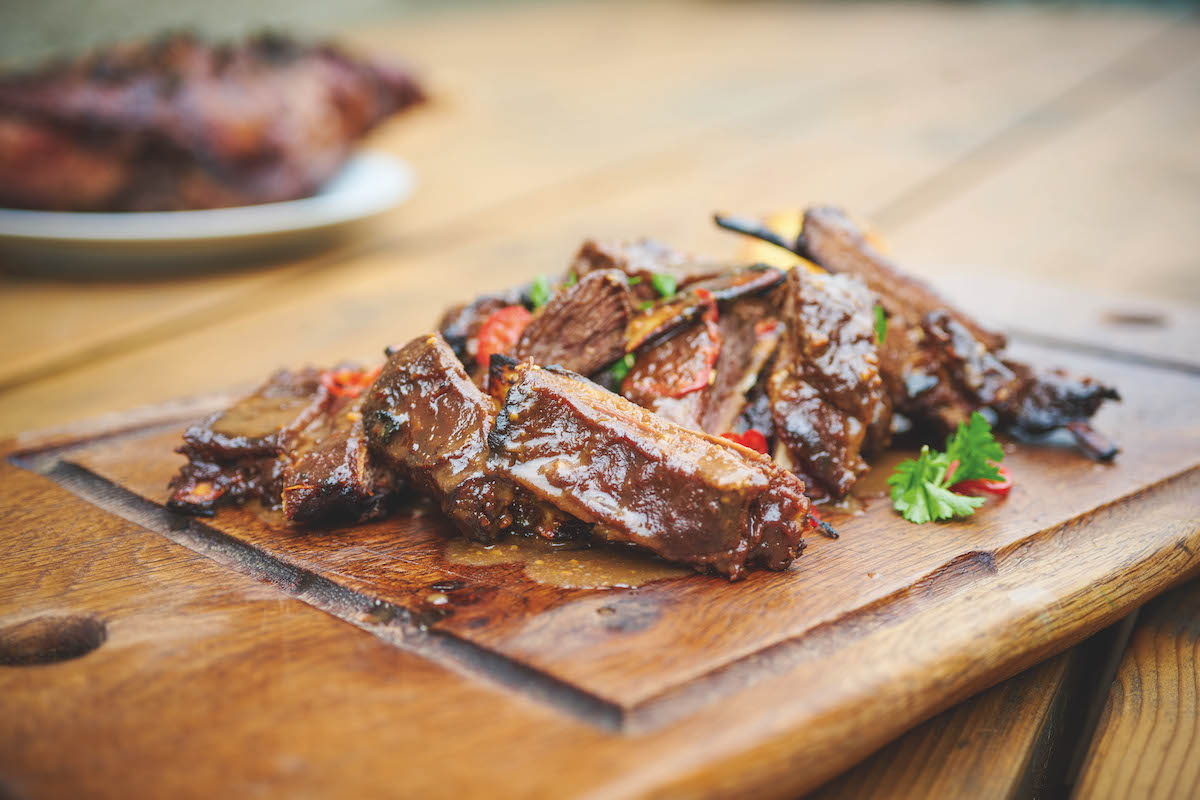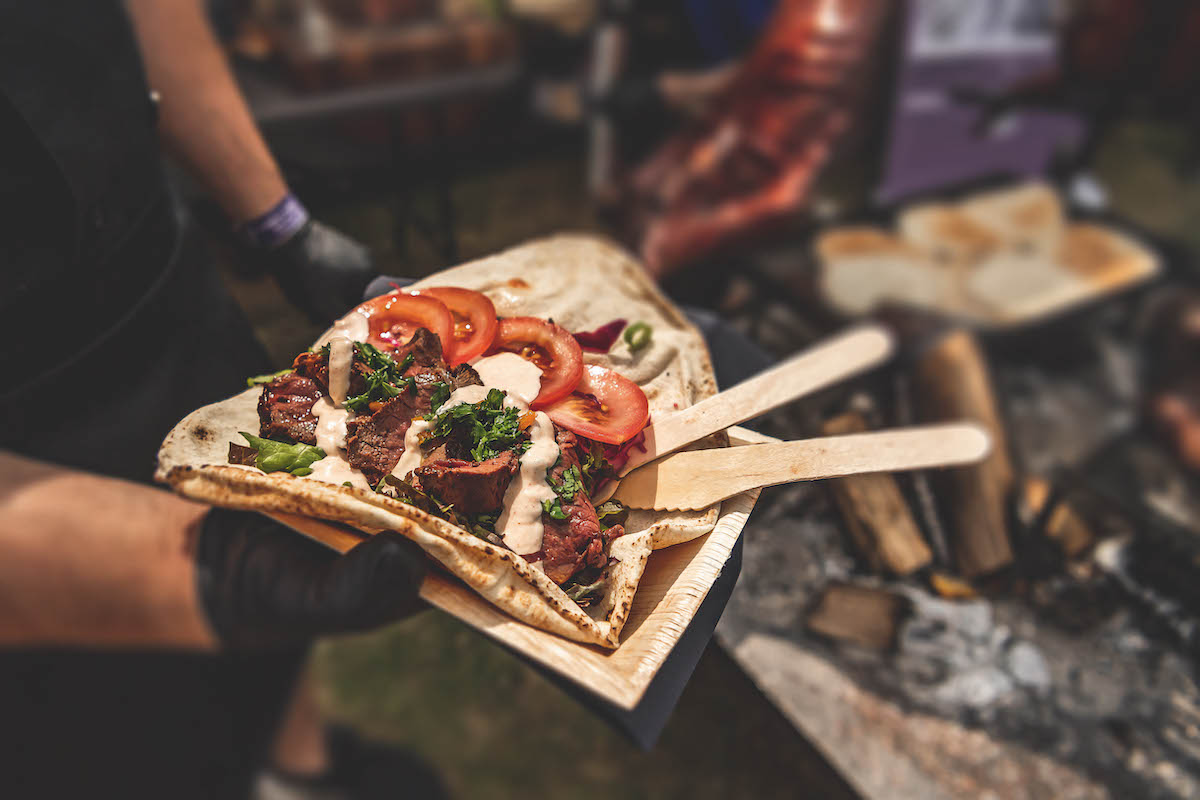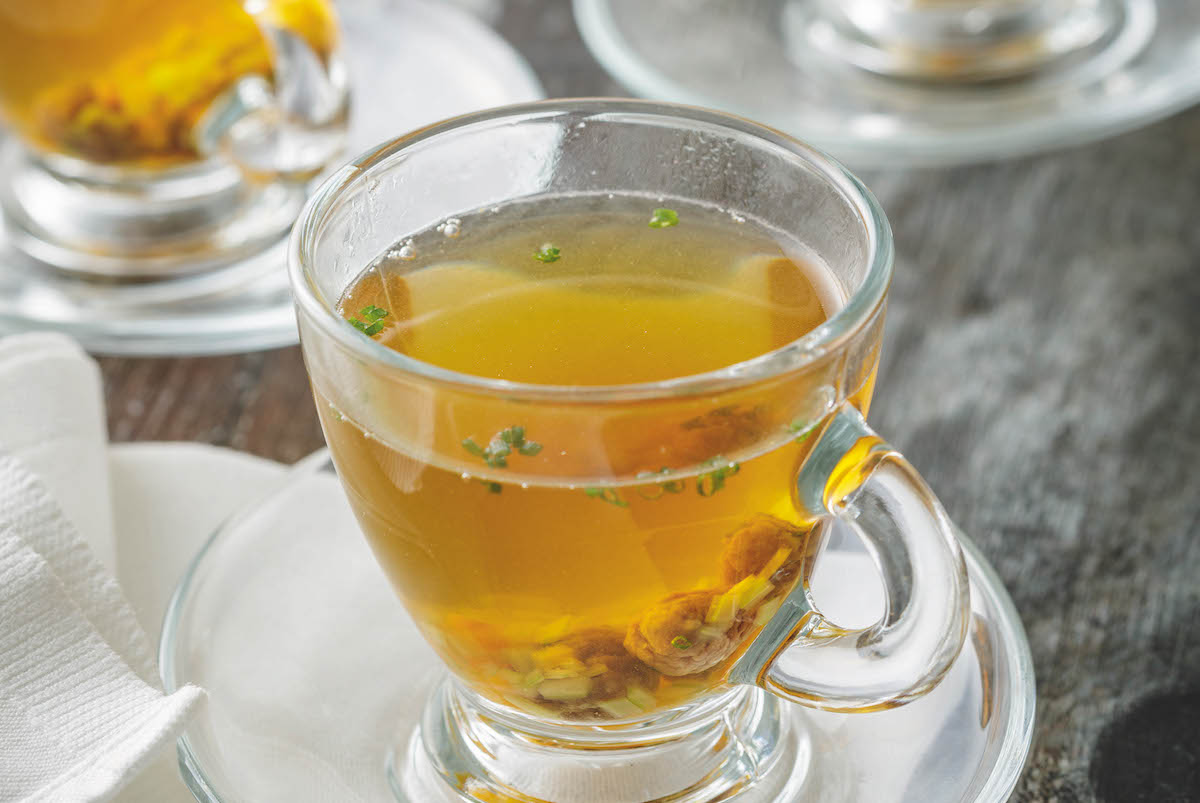Recipe for glazed venison ribs
Jose Souto offers a delicious take on barbecued ribs. Serves five.
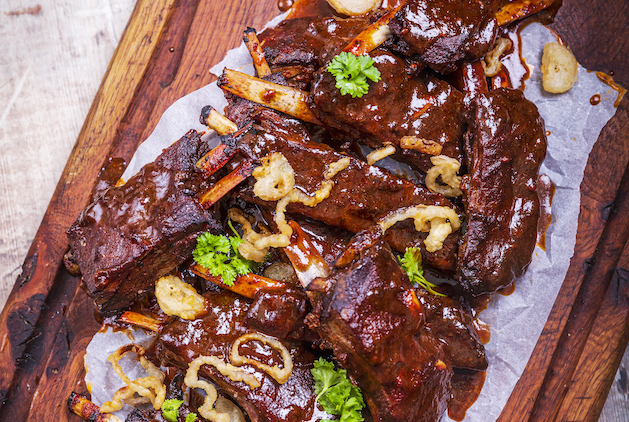
Sticky honey and smoked paprika glazed venison ribs with deep fried shallots.
Glazed venison ribs recipe
This venison ribs recipe is a take on a barbecued pork rib recipe that works really well with venison, and uses a cut that is under-utilised and more often than not used in burgers.
Ingredients
- 2 venison breasts prepared for barbecue
- 600ml tomato ketchup
- 200ml dark soy sauce
- 250ml honey
- 15g smoked paprika
- 5 cloves of garlic, finely chopped
- 500ml chicken stock
Method
- Place all the ingredients in a bowl, apart from the chicken stock, and mix well to make the BBQ marinade.
- Using a pastry brush, paint the BBQ sauce all over the ribs on both sides.
- Take a clean bin bag, large enough to fit in all the ribs, and fold over the opening of the bag so that you can see the bottom.
- Place the ribs in the bag and pour over the rest of the marinade, wash your hands and then unfold the end of the bag and tie a knot in it. Leave ribs to marinate overnight in the fridge. You can also vacuum-pack the ribs to leave overnight.
- The following day, place the ribs in an ovenproof pan large enough to take them all lying down.
- Tip the marinade into a separate bowl, add the stock, mix well and pour over the ribs, ensuring they are well covered in liquid. Then bring to the boil on the stove. Transfer to the oven and cook at 160°C for 1¾ to 2½ hours or until the meat is tender. If you have a water bath, place the vacuum-packed ribs in the water bath at 80°C for at least four hours. Once the ribs are cooked, remove from the bag, add the chicken stock and follow the rest of the recipe.
- Remove the ribs from the sauce and allow to cool. Meanwhile, pass the sauce and allow it to reduce to a thick coating consistency.
- Once the ribs are cold, cut into three-bone portions, then dip or coat with sauce before placing in the oven or on the BBQ to reheat, ensuring the sauce glazes the ribs.
A simple recipe for venison sausages
Recipe for venison sausages Making sausages at home is simple, requiring little specialist knowledge or equipment. However you will need…
How to make biltong
One of the few advantages of the lockdown has been that many outstanding projects have finally been completed. One of…
Why British venison is the most delicious
British venison is some of the most ethical, flavoursome and healthy meat in the UK. We have six species of deer and they are all so different that it begs the question, why do we still import venison? Just before COVID-19 hit, the price of venison was dropping. We are told this was due to imports from Spain and New Zealand. The quality of the driven shot venison from Spain does not come close to the quality of our British venison. Ask any Spanish chef how to cook it and he or she will say to stew it, because it’s tough and has a taint from the adrenalin coursing through the animal’s body as it runs and is shot on the hoof.
This meat needs red wine and marinades to tenderise and mask the taint, meaning it has been historically pigeonholed as a second- class meat. A few years ago, I went to southern Spain to do some demos on deer butchery and preparation of carcasses. The estate I was on did a lot of stalked venison and had tried to set itself apart by the quality of its non-driven product. They invited a few Michelin-starred chefs to sample their product and sent out loin and haunch joints. However, they all did the same thing — marinating it in a wine or acidic marinade that turned these tender cuts to mush.
Assumption
They assumed that all venison was tough, because this was what they had learned. They did not understand how different non-driven venison is and how good it can be. We have fallen into the same trap in the UK. We do not realise how lucky we are to have such good venison on our doorstep, and we should all be demanding that our supermarkets use British venison instead of the foreign imports. In this era, when we all aspire to eat local, eat well and ethically, let’s practise what we preach. The supermarkets are led by what their customers want and reflect our consciences when it comes to what fish we eat and how our meat is reared, so they should stock our venison.
We need to change their mind. I also implore stalkers to encourage someone who has never tried venison. If they say they don’t like it because they think it’s strong, tough or dry, you can help to dispel the misconception they have of this most wonderful meat. This venison ribs recipe shown here will help to change their mind. It is down to us to help our venison market to grow.

